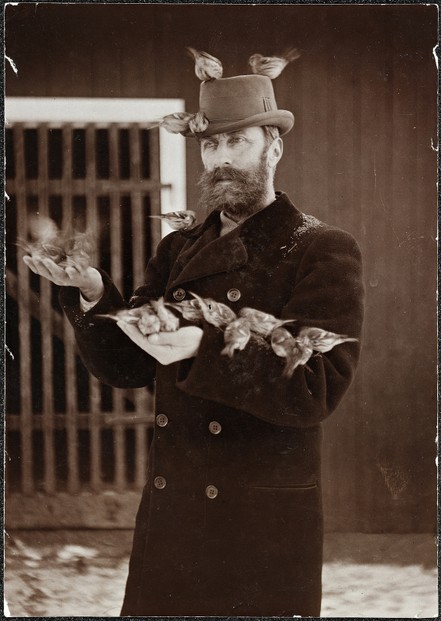Abbott, J.H.M. (John Henry Macartney). 1908. The South Seas (Melanesia). With twelve full-page illustrations in colour by Norman Hardy, F.R.G.S. London: Adam and Charles Black.
- Available via Internet Archive at: https://archive.org/details/southseasmelane00hardgoog
Bassarova, M.; Archer, M.; and Hand, S.J. December 20, 2001. “New Oligo-Miocene Pseudocheirids (Marsupialia) of the Genus Paljara from Riversleigh, Northwestern Queensland.”Memoirs of the Association of Australasian Palaeontologists 25:61-75.
Berger, Alison. "Pseudochirulus herbertensis (On-line)." Animal Diversity Web. University of Michigan Museum of Zoology. Retrieved on March 8, 2014.
- Available at: http://animaldiversity.ummz.umich.edu/accounts/Pseudochirulus_herbertensis/
Bisby, F.A.; Roskov, Y.R.; Orrell, T.M.; Nicolson, D.; Paglinawan, L.E.; Bailly, N., Kirk, P.M.; Bourgoin, T.; Baillargeon, G.; Ouvrard, D. 2011. "Pseudochirulus herbertensis." Species 2000 & ITIS Catalogue of Life: 2011 Annual Checklist. Reading, United Kingdom. Retrieved on March 8, 2014.
- Available at: http://www.catalogueoflife.org/annual-checklist/2011/search/all/key/pseudochirulus+herbertensis/match/1
Burnett, S. & Winter, J. 2008. "Pseudochirulus herbertensis." In: IUCN 2013. IUCN Red List of Threatened Species. Version 2013.2. Retrieved on March 8, 2014.
- Available at: http://www.iucnredlist.org/details/18509/0
Chambers, John, 2009. "Herbert River Ringtail Possum: Pseudochirulus herbertensis." Rainforest-Australia. Retrieved on March 8, 2014.
- Available at: http://rainforest-australia.com/herbert_possum.htm
- Available at: http://wildlife-australia.com/herbert.htm
Collett, Robert. 1884. "On some apparently new Marsupials from Queensland." Proceedings of the Scientific Meetings of the Zoological Society of London for the Year 1884, Vol. 52, Issue 3 (May 20, 1884): 381-389. London: Longmans, Green, Reader, and Dyer. Retrieved on March 8, 2014.
- Available via Biodiversity Heritage Library at: http://biodiversitylibrary.org/page/28690276
- Available via Internet Archive at: https://archive.org/stream/proceedingsofgen97scie#page/317/mode/1up
Duff, Andrew; and Lawson, Ann. 2004. Mammals of the World: A Checklist. Yale University Press.
Flannery, Timothy F. 1994. Possums of the World: A Monograph of the Phalangeroidea. Chastwood, Australia: GEO Productions in association with the Australian Museum.
"Herbert River Ringtail Possum." Pp. 121-122 in Grzimek's Animal Life Encyclopedia, Second Edition. Volume 13: Mammals II, edited by Michael Hutchins, Devra G. Kleiman, Valerius Geist, and Melissa C. McDade. Farmington Hills, MI: Gale Group, Inc., division of Thomson Learning Inc., 2004.
Kerle, Jean Anne. 2001. Possums: The Brushtails, Ringtails and Greater Glider. Sydney: University of New South Wales Australian Natural History Series. Retrieved on March 8, 2014.
- Available at: http://books.google.com/books?id=YDM0hjAwchUC&lpg=PT65&dq=Petropseudes%20dahli&pg=PT66#v=onepage&q=Petropseudes%20dahli&f=false
Larsen, Fredrik. June 8, 2012. "Norwegian Builders of Australia." ReiseFredrik i Australia. Retrieved on March 8, 2014.
- Available at: http://reisefredrik.com/2012/06/08/norwegian-builders-of-australia/
Laurance, S.G. 1999. "Tropical Wildlife Corridors: Use of Linear Rainforest Remnants by Arboreal Mammals." Biological Conservation 91:231-239. Retrieved on March 8, 2014.
- Available at: http://mammalsresearch.blogspot.com/2011_04_01_archive.html
Lumholtz, Carl. Among Cannibals: An Account of Four Years' Travels in Australia and of Camp Life with the Aborigines of Queensland. New York: Charles Scribner's Sons, 1889. Retrieved on March 8, 2014.
- Available via Internet Archive at: http://www.archive.org/stream/amongcannibalsac1889lumh#page/n5/mode/2up
Menkhorst, Peter; and Knight, Frank. 2001. A Field Guide to the Mammals of Australia. South Melbourne: Oxford University Press.
Meredith, Robert W.; Mendoza, Miguel A.; Roberts, Karen K.; Westerman, Michael; and Springer, Mark S. March 2, 2010. “A Phylogeny and Timescale for the Evolution of Pseudocheiridae (Marsupialia: Diprotodontia) in Australia and New Guinea.” Journal of Mammalian Evolution17(2):75-99. Retrieved on March 8, 2014.
- Available at: http://www.ncbi.nlm.nih.gov/pmc/articles/PMC2987229/
Nowak, Ronald M. 1999. Walker's Mammals of the World, Sixth Edition. Volume I. Baltimore: Johns Hopkins University Press.
Nowak, Ronald M. 2005. Walker's Marsupials of the World. Baltimore: Johns Hopkins University Press.
Ride, W.D.L. A Guide to the Native Mammals of Australia. Melbourne: Oxford University Press, 1970.
Strahan, Ronald; and Conder, Pamela. 2007. Dictionary of Australian and New Guinean Mammals. CSIRO Publishing.
"Wet Tropics of Queensland." UNESCO World Heritage Centre List. Retrieved on March 8, 2014.
- Available at: http://whc.unesco.org/en/list/486
Wilson, D.E.; and Reeder, D.M. 2005. Mammal Species of the World: A Taxonomic and Geographic Reference, Third Edition. Johns Hopkins University Press.























 Are Hawaiian Huakai Po Nightmarchers Avenging Halloween Thursday?on 10/02/2024
Are Hawaiian Huakai Po Nightmarchers Avenging Halloween Thursday?on 10/02/2024
 Mailing Addresses for 2023 Form 4868 Extending 1040 and 1040SR April 15, 2024, Due Dateon 04/15/2024
Mailing Addresses for 2023 Form 4868 Extending 1040 and 1040SR April 15, 2024, Due Dateon 04/15/2024
 Mailing Addresses for 2023 Forms 1040 and 1040SR Filed in 2024on 04/15/2024
Mailing Addresses for 2023 Forms 1040 and 1040SR Filed in 2024on 04/15/2024
 Mailing Addresses for 2022 Form 4868 Extending 1040 and 1040SR April 18, 2023, Due Dateon 04/13/2023
Mailing Addresses for 2022 Form 4868 Extending 1040 and 1040SR April 18, 2023, Due Dateon 04/13/2023



Comments